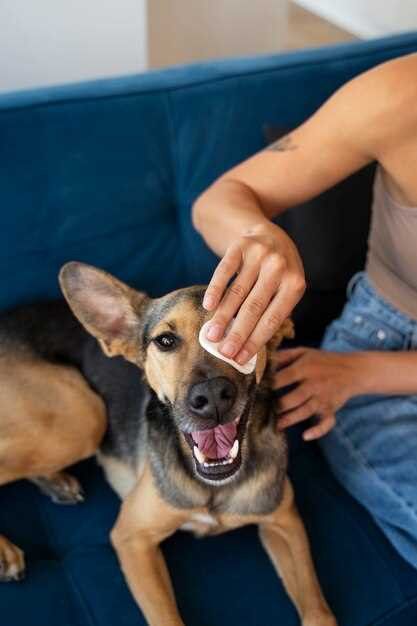
Keeping your furry friends happy and healthy is a top priority for every pet owner, and sometimes that means using products that are safe and effective. However, when it comes to using baby oil on dogs, it’s important to proceed with caution.
Baby oil is traditionally used to moisturize and protect delicate skin, but can it be used on our four-legged companions as well? While it may seem harmless, using baby oil on dogs can have mixed results and potential risks. It’s essential to understand the potential benefits and drawbacks before using it on your furry friend.
One of the main concerns with using baby oil on dogs is the risk of skin irritation or allergies. Dogs have different skin pH levels compared to humans, and what may be safe for us could potentially cause problems for them. Additionally, some baby oils contain added fragrances or other ingredients that could irritate a dog’s skin or be harmful if ingested.
Another consideration is the tendency for dogs to lick their fur and skin excessively. This can result in them ingesting the baby oil, which is not intended for consumption. Ingesting baby oil can lead to gastrointestinal issues such as diarrhea, vomiting, or even more serious complications if a large amount is consumed. Therefore, it’s important to keep this in mind when deciding whether or not to use baby oil on your dog.
Is It Safe to Put Baby Oil on Dogs?
Using baby oil on dogs is a topic of debate among pet owners and veterinarians. While baby oil is generally safe for human use, it may not be suitable for dogs.
Baby oil is made from mineral oil, which can be harmful if ingested or absorbed through the skin. Dogs may try to lick off the baby oil, leading to potential gastrointestinal problems. Additionally, the fragrances and additives in baby oil can cause allergic reactions or skin irritations in dogs.
It’s important to note that dogs have different skin pH levels than humans, and using baby oil can disrupt the natural balance and cause skin problems. Instead, it’s recommended to use products specifically designed for dogs, such as dog-friendly shampoos and conditioners. These products are formulated to be safe and gentle on a dog’s skin and coat.
If you notice that your dog has dry or itchy skin, it’s best to consult with a veterinarian who can recommend the appropriate course of action. They may suggest an alternative solution or prescribe medications that will address the underlying issue without causing harm to your dog.
In conclusion, while it may be tempting to use baby oil on your dog, it’s generally not considered safe. It’s best to stick to products that are specifically formulated for dogs to ensure the health and well-being of your furry friend.
Potential Risks
While baby oil can be safe for dogs in certain situations, there are some potential risks to be aware of:
1. Allergic reactions: Just like humans, dogs can develop allergic reactions to certain ingredients found in baby oil. It’s important to test a small area of your dog’s skin before applying it all over their body.
2. Ingestion: Dogs are known for licking their fur, so if you apply baby oil to their skin, there’s a chance they may ingest it. Baby oil is not meant to be ingested and can cause gastrointestinal issues if consumed in larger quantities.
3. Slipping and falling: Baby oil can make a dog’s fur and the floor slippery, increasing the risk of them slipping and injuring themselves.
4. Skin irritation: Baby oil may not be suitable for dogs with certain skin conditions, such as allergies or dermatitis. It can exacerbate their symptoms and cause further irritation.
5. Respiratory issues: Some dogs may be more sensitive to the scent of baby oil or the fumes it releases. This can lead to respiratory issues, such as coughing, sneezing, or difficulty breathing.
Always consult with your veterinarian before using baby oil or any other products on your dog. They can provide guidance based on your dog’s specific needs and any underlying health conditions. It’s better to be safe than sorry, and your vet will be able to recommend alternative options if necessary.
Alternatives to Baby Oil for Dogs
While baby oil can be used on dogs in some cases, there are also alternatives that can be safer and more beneficial for their skin and coat. Here are some alternatives you can consider:
1. Coconut Oil: Coconut oil is a natural and safe option for moisturizing your dog’s skin. It has antibacterial and antifungal properties, which can help prevent skin infections. Additionally, it can improve your dog’s coat’s shine and texture.
2. Oatmeal: Oatmeal is known for its soothing properties, making it an excellent option for dogs with dry or irritated skin. You can use oatmeal shampoo or create a homemade oatmeal bath for your furry friend.
3. Vitamin E Oil: Vitamin E oil is a powerful antioxidant that can promote healthy skin and coat for your dog. It can help moisturize and soothe dry skin, relieve itchiness, and even aid in healing minor wounds or hot spots.
4. Aloe Vera: Aloe vera gel can be used topically on your dog’s skin to provide relief from itching and irritation. It has cooling and moisturizing properties that can be beneficial for dogs with dry or inflamed skin.
5. Jojoba Oil: Jojoba oil is a lightweight and non-greasy oil that can be used to moisturize your dog’s skin and coat. It can help reduce dryness, flakiness, and dandruff, promoting a healthier and shinier coat.
Remember, it is always best to consult with your veterinarian before using any new products on your dog’s skin. They can provide guidance on the most suitable options, depending on your dog’s specific needs and conditions.
Benefits of Natural Oils for Dog Skin
Adding natural oils to your dog’s skincare routine can provide numerous benefits for their skin and coat health. Here are some advantages of using natural oils on your furry friend:
- Moisturizes the Skin: Natural oils like coconut oil, olive oil, and jojoba oil can deeply moisturize your dog’s skin, preventing dryness and relieving itching caused by allergies or environmental factors.
- Improves Coat Condition: Regular application of natural oils can leave your dog’s coat looking shinier and healthier. These oils work to nourish and condition the hair follicles, making the coat less prone to breakage and shedding.
- Soothes Irritated Skin: Natural oils possess anti-inflammatory properties that can help soothe redness and inflammation on your dog’s skin. This can be beneficial for dogs with skin conditions like dermatitis or hot spots.
- Repels Parasites: Certain natural oils, such as neem oil or lavender oil, can act as natural repellents for fleas, ticks, and other parasites. Regular use of these oils can help prevent infestations and keep your dog free from these pesky critters.
- Enhances Healing: Natural oils can assist in the healing process of wounds, cuts, or skin infections. They have antimicrobial properties that can help inhibit the growth of bacteria and promote faster healing.
Before incorporating natural oils into your dog’s skincare routine, it’s crucial to consult with your veterinarian. They can recommend the best oils for your dog’s specific needs and advise on proper application methods.
Dangers of Using Baby Oil on Dogs

While baby oil may seem like a harmless product to use on your dog’s skin and fur, it can actually pose several dangers and risks. Before using baby oil on your dog, it’s important to understand the potential hazards it may present.
One of the main concerns when it comes to using baby oil on dogs is the risk of skin irritation and inflammation. Baby oil is not formulated specifically for use on animals and may contain ingredients that can irritate your dog’s skin. This can lead to redness, itching, and discomfort for your furry friend. It’s always best to use products that are specifically designed for use on dogs to avoid potential skin issues.
Another danger of using baby oil on dogs is the risk of ingestion. Dogs are known to lick their fur, and if they ingest baby oil, it can cause gastrointestinal upset, including vomiting and diarrhea. Ingesting large amounts of baby oil can lead to more serious health issues such as pancreatitis or lipid pneumonia. It’s important to keep your dog from licking the baby oil off their coat to prevent these potential problems.
In addition, using baby oil on dogs can pose a slip and fall hazard. Baby oil is a slippery substance, and when applied to your dog’s fur, it can make them lose traction on smooth surfaces. This can result in accidents and injuries such as sprains or fractures. It’s essential to consider the safety of your dog and choose products that won’t put them at risk of slipping or falling.
Lastly, the scent of baby oil can attract insects and pests. Some ingredients in baby oil may attract fleas, ticks, or other parasites, which can lead to infestations and potential health problems for your dog. It’s important to use products that are specifically designed to repel insects and pests to keep your dog safe and protected.
- Using baby oil on dogs can cause skin irritation and inflammation
- Ingestion of baby oil can lead to gastrointestinal upset
- Baby oil can make dogs slip and fall on smooth surfaces
- The scent of baby oil can attract insects and pests
In conclusion, while baby oil may seem like a convenient solution for your dog’s skin and fur care, it’s important to be aware of the dangers it can pose. It’s always best to use products specifically made for dogs to ensure their safety and well-being. If you have any concerns about your dog’s skin or fur, it’s recommended to consult with a veterinarian for proper guidance and advice.
How to Properly Moisturize Your Dog’s Skin
Keeping your dog’s skin moisturized is essential for preventing dryness, itchiness, and other skin problems. Here are some tips on how to properly moisturize your dog’s skin:
1. Use pet-friendly moisturizers: It is important to use moisturizers that are specially formulated for dogs. Avoid using human moisturizers, as they may contain ingredients that can be harmful to dogs.
2. Choose the right moisturizer: Look for moisturizers that are specifically designed to hydrate and nourish a dog’s skin. These moisturizers will typically contain ingredients such as aloe vera, olive oil, coconut oil, or oatmeal.
3. Apply in the right areas: Focus on areas prone to dryness, such as the elbows, paws, and nose. Gently massage the moisturizer into your dog’s skin to ensure it is evenly distributed.
4. Be consistent: Regular moisturizing is key to maintaining your dog’s skin health. Establish a moisturizing routine that works for you and your dog, whether it’s once a day or a few times a week.
5. Monitor your dog’s skin: Keep an eye on your dog’s skin condition to see if it improves with moisturization. If you notice any redness, irritation, or other adverse reactions, discontinue use and consult your veterinarian.
Remember, every dog is different, so it may take some trial and error to find the perfect moisturizer and routine for your furry friend. With proper moisturization, you can help keep your dog’s skin healthy and happy.
